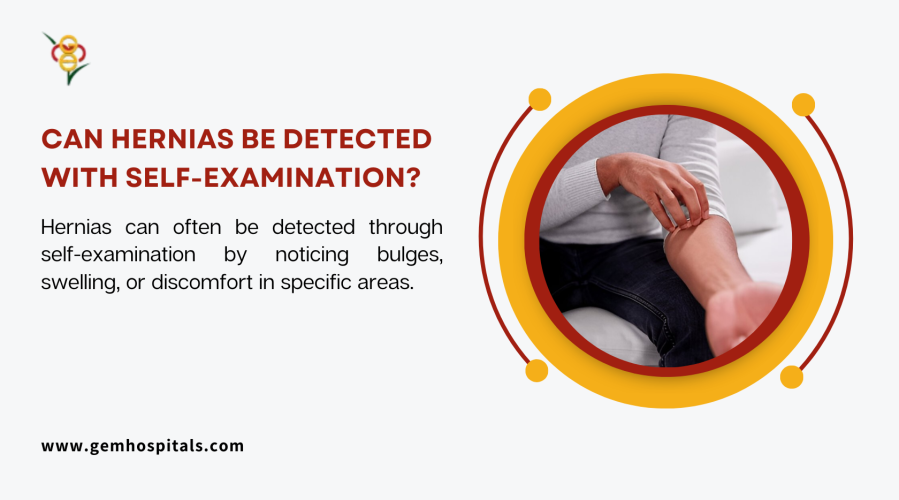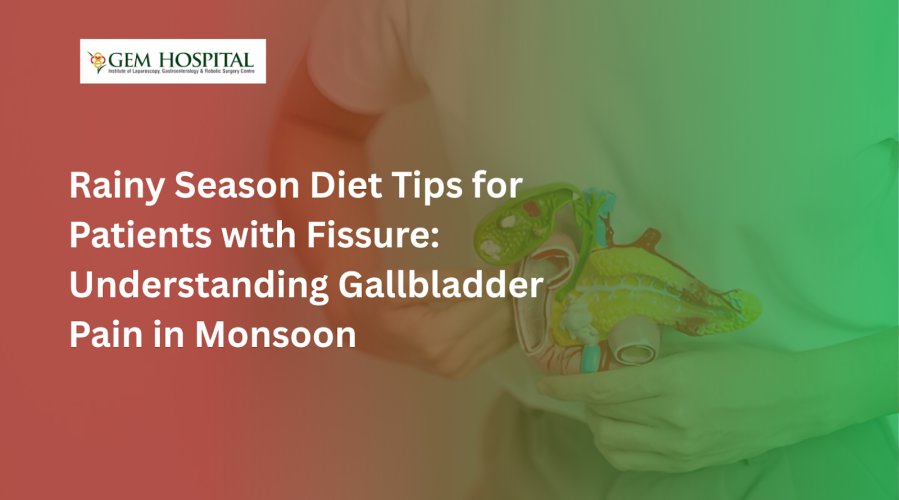Learn how to prevent jaundice during the rainy season with simple safe water practices and healthy food habits. Discover key hygiene measures, diet precautions, and monsoon safety tips to protect your liver and overall health.
Can Hernias Be Detected with Self-Examination?

Hernias are a rather frequent health problem that might remain asymptomatic for a long time before manifesting themselves with definite symptoms. The tutorial also educates the patient about how to check for signs of a hernia by means of self-examination so that the condition could be detected in its early stages in case it is necessary. This article will give a detailed description on how to do hernia self-check, the drawbacks of this check and the need to seek medical advice.
Understanding Hernias
A hernia is a condition that arises when an organ or tissue protrudes through a hole in the muscle or other tissue that normally contains it. This condition may cause lumps, swelling or pain particularly when one is physically active.
The most common types of hernias include:
- Inguinal hernias: They are located in the groin region, and are the most prevalent, particularly in males.
- Umbilical hernias: These are skin rash that commonly develop around the belly button but can affect infants and adults as well.
- Hiatal hernias: These are located in the superior portion of the stomach and pertain to a portion of the stomach that herniates through an aperture in the diaphragm.
- Incisional hernias: These can arise after surgeries in the abdomen where the tissue grows through a site that has been operated on.
Hernias may produce swellings or lumps at the site of the hernia which may get enlarged in standing position, while bending or even while coughing. Some of the signs include; discomfort, fullness, or pain especially when in motion.
How to Conduct a Self-Examination for a Hernia
Palpation for hernias is a good method in identifying the abnormal signs, but it is important to adhere to some certain procedures in order to get the right results. Here’s how you can perform a basic self-examination:
- Choose a Comfortable Position: Evaluating for a hernia is normally easier if the patient is standing because it may cause the protrusion to become larger.
- Inspect and Feel for Bulges: If it’s a groin hernia, stand and raise your hand, then apply pressure with your fingers and feel for a bulge or swelling. In men, the presence of an inguinal hernia should be checked in the groin area. In men and women, look at the abdomen for signs of an umbilical or incisional hernia.
- Cough and Observe Changes: A hernia may also protrude more when one is coughing or straining. Attempt to do a little coughing and see if you can feel any of the above stated protrusions or changes in pressure.
- Assess Discomfort Levels: Pay attention to discomfort or pain in certain regions of the body, and particularly whether this increases during exercise or lifting, or when in a bent position. Pain, a feeling of weight, or a sensation of soreness might be signs of a hernia.
- Repeat in Various Positions: To be even more precise, one should try to look at the area of the hernia from the position of the patient lying down, as some of them may look or behave differently in this position.
However, self- examination is not a full substitute for a medical consultation. Any lump, pain or any other abnormal feeling should be taken to the doctor for check up.
Limitations of Self-Examination
However, a self-examination is not without its drawbacks though it can give the first impetus. Not all hernias are observable through self examination and symptoms may depend with type of hernia and the general health status of the affected person. There are types of hernias that are asymptomatic, for example small hiatal hernias that are discovered incidentally on X-ray or endoscopy.
Also, the manifestation of hernia may be similar to those of other diseases and health conditions. For example, the abdominal pain could be of the gastrointestinal origin rather than a hernia, and a visible lump could be due to other soft tissue pathology. For this reason, self-examination should be viewed as an initial phase of the assessment rather than as a diagnostic exercise.
The other drawback is that a hernia may be either over or underestimated in terms of its severity. While some may be worried by a simple lump, others may consider a hernia that needs surgery as nothing serious. Diagnosis and treatment should be conducted by professionals and therefore the information provided should be correct.
When to See a Doctor
If you experience any of the following symptoms, it’s crucial to seek medical advice:
- Persistent Pain or Discomfort: If you have pain that occurs all the time or the pain is getting worse, then you should see a doctor immediately.
- Visible or Growing Lump: A lump or swelling that is large or becomes larger may be a hernia.
- Pain During Physical Activity: There are times that you have discomfort or pain in your abdominal area especially when lifting something, bending or even coughing, this may be due to the activity of the hernia.
- Sudden, Severe Pain or Nausea: It is possible for a hernia to cause complications such as strangulation, in which blood supply to the herniated tissues is blocked. This can lead to sudden sharp severe pain, nausea or vomiting and is considered a medical emergency.
Hernia should be treated early enough so that symptoms can be controlled and complications prevented. Physicians may perform some routine clinical assessments or refer a patient to have an X-ray or some other imaging test to get a clearer picture of the condition.
The Role of Regular Check-ups
It is important for everyone to get checked up once in a while but it is more important for those who are likely to develop hernias. It includes lifting heavy objects, chronic cough, obesity, and past surgeries on the abdomen. Hernias can be diagnosed during routine checkups and this will be in the early stages before the symptoms manifest.
General practitioners and surgeons can follow any small hernias and advise the patient on the most appropriate management: dietary and lifestyle changes, regular check-ups or repairs. This also makes it possible to have more treatment procedures and in case of a surgery, then it might be less complicated and less aggressive.
Hernia self-checking is helpful in the first instance to give you an idea of the hernia signs and make you more conscious of your body condition. But, it should be noted that breast self-examination is not a method for diagnosis of breast cancer. In case of any continuous pain or any lump that does not disappear, it is recommended that one sees a doctor for medical examination.
In case you think that you may be suffering from a hernia, you are encouraged to visit GEM Hospital and consult our specialists. We have a team of professionals who will give you a detailed assessment and recommend appropriate therapies that will give you comfort and a healthy state. Don’t wait until it is too late, book your appointment today to take that first step towards proper hernia treatment.
Blogs & Article
Understand why rainy weather may trigger gall bladder pain. Explore the causes, symptoms, and essential precautions to manage discomfort during monsoon season. Learn how humidity, diet changes, and infections influence gallbladder health.
Discover essential rainy season diet tips for patients with fissures and understand why gallbladder pain increases during the monsoon. Learn what foods to avoid, what to include, and how to maintain digestive health in humid weather.


